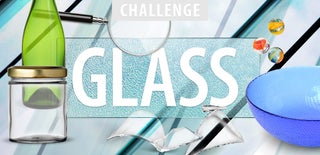Introduction: My Fathers Barometer
When I was a kid my father got a barometer for Christmas, it was probably the best gift he ever received. At least once a day he would check it, tap on the glass and set the pointer to the current air pressure then give his weather prediction. Years later I got it from my sister, I put it away until recently I found it again. The barometer no longer worked and the thermometer was broken.
I almost threw it out until the fond memories came back. My recent interest in the Arduino sparked a plan to resurrect it and bring it into the 21st century. This barometer is made of wood, so with the help of my friends at work Bernardo the painter and Sam and Doug the carpenters we gave it a face lift and modified it to accept the wires and electronics.
Step 1:
Aside from wires and necessary tools these four items are all you really need. I am showing a Arduino Nano but an Uno will work as well. I had to use the Nano because there was no room in the can behind the barometer dial for the Uho. The plastic barometers are much easier to use and there is loads of room inside for the electronics. I use a Neopixel strip 8 for the thermometer and a Neopixel ring 12 for the barometer. Depending on the graphics on the face you may get away using the 24. the ring is larger but gives you twice the resolution of barometric pressure, and if you are artistic you may want to put your own art work on the face. If you do I would love to see it, my Email is in the code.
The BME280 is my sensor of choice, there are others that work will, I happened to have this one on hand. The BME280 also is capable of returning humidity and elevation.
Step 2: Prepare the Barometer
Start with removing the brass ring and glass, the glass is probably plastic and the ring is tin. on the plastic models the ring and lens are staked in. After you remove the back you should be able to push or tap them out far enough to pry the stakes out with a pair of side cutters. If the thermometer is broken cut or pry out the straps that hold the thermometer in place.
The diafram on the back of the barometer face may be riveted on, if you use the Neopixel ring 24 it may be large enough to drill for the wires without the barometer working interfering. The neopixel will slip over the needle but may need to be bent forward slightly to clear the pixels.
Step 3: Start the Build
The Neopixel ring has a top and bottom, by looking the terminal positions its easy to determine. Place the ring on the face and mark VIN, GND and D0. Drill about a 3/16" hole for the wires to feed through the face, three holes required. Solder the wires on so they extend from the back then slide shrink tubes to protect the wires going through the face. Put about 4 to 6 double sided adhesive on the back of the ring position carefully and press firmly to the face.
With the plastic barometer the neopixel strip may need to be stuck to the face of the temperature scale and a 1/4" hole drilled through the bottom of the bevel to feed the wires through to the inside of the body. Again use the adhesive pads to secure the strip.
With the wooden barometer I was able to slice the thermometer face and mount the strip behind it.
Step 4: Program the Arduino
Mount the Arduino inside the body, connect all the wires according to the drawing (sorry for the poor quality), use a breadboard for setup and testing but after its up and running its best to solder and secure all connections. Upload the sketch.
The strip and ring should start a few seconds after powering up. The thermometer will rise to a temperature range and the ring will will light up clock wise to an air pressure range. If the lights are not bright enough the brightness in the software is set at 16 of 255 brightness levels.
Attachments
Step 5: Last Minute Thoughts
I think this instructable is more difficult to assemble than it is to program. A lot of the instructions are Serial.print commands for verifying the sketch. A simple USB wall adapter will easily power this project.
I hope you all enjoy this project, it takes a piece of the past and gives it a new life.
This is the first submission I've done. Please vote for the newby.
Thanks again to all.

Participated in the
Glass Challenge 2017

Participated in the
Sensors Contest 2017














